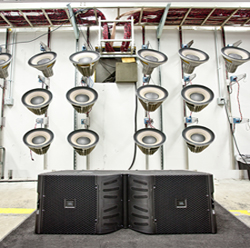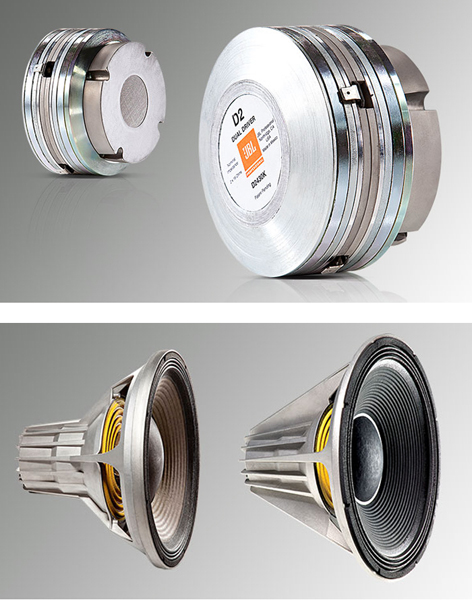
Driving Force
The extent to which the development team integrates their collective talents demonstrates the benefit of fostering synergism among a brain trust of engineers. High-frequency drivers need waveguides; cone drivers need enclosures; enclosures need rigging and transport accessories; loudspeaker systems need amplifiers and signal processing.
By roping in the skill set of dbx and BSS signal processing experts, mated with Crown amplification and onboard DSP, the product offerings represent genuine “systems technology.” The approach is to integrate diverse technologies into a cross-functional support system in which each piece supports and enhances the others in a complementary manner.
An example: rather than sourcing low-, mid-, and high-frequency drivers from a pool of manufacturers, JBL does the opposite: they identify a need or see an opportunity to improve and focus their efforts into designing and manufacturing appropriate drivers in-house.
Case in point is the D2 Dual Diaphragm, Dual Voice Coil high-frequency driver that’s the work of Alexander Voishvillo, Ph.D, who serves as senior manager of Transducer Engineering.
Being a proponent of composite materials in my own loudspeaker development work (some readers may remember the Apogee AE-5), it was not difficult to quickly “get” the importance of the D2 in its significant deviation from former design methodologies.
Compression drivers are normally reserved for high-power systems only; the old days in which studio monitors used compression drivers such as the Altec Lansing 604 and JBL’s own 4320 ended a time ago. Or did it? Let’s first take a look at the D2.
Instead of employing a typical dome-shaped diaphragm commonly made of aluminum, titanium, or occasionally beryllium, the D2 uses two separate annular diaphragms, each constructed of a low-mass polymer, and each driven by separate voice coils working against separate neodymium magnets.
Together, the dual annular diaphragms produce a single acoustical output with a radiating area equaling that of a typical 3-inch dome diaphragm, but with twice the usual power handling. The advantages are many. First is control of the “breakup mode.” Breakup is essentially unavoidable in conventional designs and occurs as the metallic dome diaphragm transitions from pistonic motion to vibratory motion in the upper frequencies.
While some designs and materials are better than others, breakup occurs in the upper audible octave in almost all HF compressions drivers. This is important because when a radiating surface enters into breakup mode, the byproduct is non-linear distortion, discontinuity in frequency and phase response, and other forms of significant sonic coloration.

